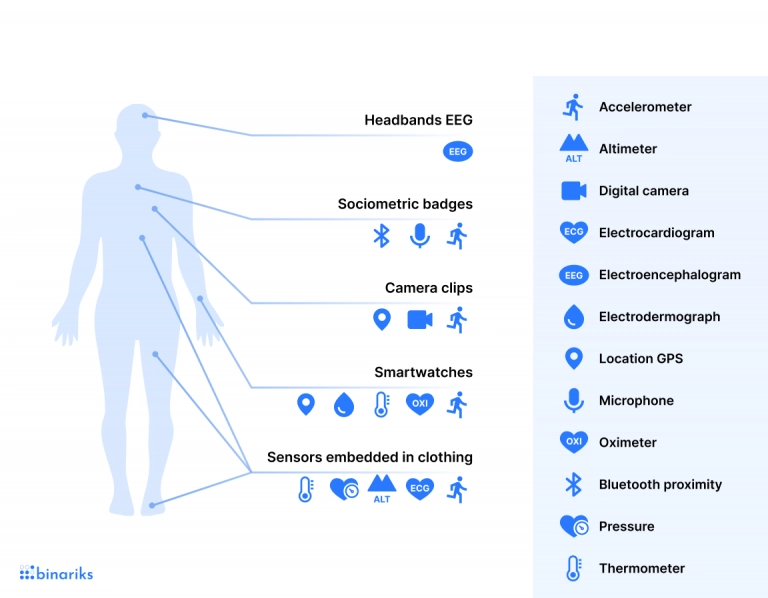The Future of Medical Care: Remote Individual Keeping Track Of Streamlined
As medical care remains to advance, one area that holds immense pledge is remote patient surveillance. The concept of streamlining this process via technical improvements is improving the method treatment is provided and obtained. With a focus on improving client results and streamlining healthcare distribution, remote surveillance is poised to transform the market. By discovering the advantages, technical innovations, and future fads in this field, we can get beneficial insights right into the transformative capacity of remote client surveillance.
Benefits of Remote Individual Surveillance
Remote person monitoring presents a wide range of benefits for both health care carriers and patients alike. In addition, remote person tracking enhances the overall quality of treatment by providing an extra holistic and detailed sight of patients' health and wellness condition past typical in-person check outs.
Additionally, remote individual surveillance can lead to improved patient outcomes and complete satisfaction. Remote tracking can decrease the requirement for constant healthcare facility check outs, lowering healthcare expenses for both companies and individuals.
Innovation Driving Remote Surveillance
In the realm of modern medical care, technological developments play a crucial duty in driving the advancement and effectiveness of remote client tracking. The combination of ingenious modern technologies such as wearable devices, mobile applications, and cloud-based systems has actually revolutionized the method doctor from another location monitor and handle patient health and wellness - best remote patient monitoring software. These technologies allow continuous real-time monitoring of important indications, medication adherence, and various other essential health and wellness data, allowing for prompt interventions and individualized treatment plans
One key modern technology driving remote tracking is the Web of Points (IoT), which allows smooth connectivity between clinical tools and medical care systems. IoT devices such as smartwatches and wireless sensing units transmit and accumulate patient information to centralized platforms, promoting remote surveillance from anywhere in the world. Synthetic knowledge (AI) and artificial intelligence algorithms further improve remote surveillance by assessing substantial amounts of individual information to spot patterns, forecast health fads, and sharp health care carriers to possible issues.
Effect on Healthcare Distribution
With the integration of innovative technologies driving remote client monitoring, the effect on health care distribution is becoming significantly profound and transformative. Remote individual monitoring enables health care providers to provide even more proactive and tailored like people, resulting in improved health end results and minimized health center admissions. By remotely tracking crucial indicators, signs, and medicine adherence, healthcare experts can interfere early, stopping difficulties and enhancing the total top quality of care.
Furthermore, remote monitoring enhances access to medical care solutions, particularly for people in underserved or rural locations. Patients can get continual tracking and support from their homes, eliminating the requirement for frequent in-person check outs. This not just conserves time and minimizes expenses for both clients and medical care centers yet likewise minimizes the threat of direct exposure to infectious conditions, a vital factor to consider in the existing medical care landscape.
Additionally, remote client tracking allows health care providers to far better prioritize and assign sources treatment based on real-time data. By recognizing high-risk people and intervening immediately, healthcare delivery comes to be much more reliable and efficient, inevitably resulting in a much more lasting and patient-centered health care system.
Improving Patient Outcomes

Moreover, RPM enables proactive administration of persistent problems, minimizing the likelihood of severe worsenings and health center readmissions. Clients profit from increased go to my site benefit and convenience, as they can obtain care in their very own homes while remaining attached to their doctor. This continuous tracking not just enhances client fulfillment however likewise promotes a feeling of empowerment and engagement in their own wellness administration.
Future Trends in Remote Tracking
Welcoming cutting-edge innovations in remote client monitoring is shaping the future landscape of medical care distribution. The future trends in remote tracking are anticipated to revolutionize the method medical care is given, making it much more patient-centric and effective. One significant fad is the increased usage of wearable gadgets and sensors to accumulate real-time information, allowing health care providers to monitor individuals constantly without the requirement for frequent in-person visits. These gadgets can track important indicators, medicine adherence, and activity levels, providing a comprehensive sight of the client's health and wellness condition.

Additionally, telehealth platforms are coming to be extra advanced, enabling online assessments, remote medical diagnosis, and remote person keeping an eye on done in one incorporated system (remote patient monitoring software). This alternative method to remote monitoring is improving medical care shipment, enhancing patient contentment, and inevitably, enhancing overall top quality of treatment
Conclusion
In conclusion, remote individual tracking uses numerous advantages in medical care distribution, driven by improvements in technology. It has the potential to enhance patient end results and transform the method health care is provided. Future patterns in remote monitoring will remain to form the landscape of medical care, supplying chances for even more customized and reliable individual treatment.
Remote individual tracking provides a wide variety of benefits for both medical care providers and patients alike. Furthermore, remote individual monitoring improves the overall top quality of care by supplying a much more thorough and alternative sight of patients' health and wellness status past traditional in-person brows through.
Furthermore, remote patient tracking can lead my review here to enhanced individual end results and complete satisfaction. Remote person tracking permits medical care carriers to supply even more aggressive and customized care to people, leading to improved health outcomes and decreased hospital admissions. Remote patient surveillance (RPM) plays a substantial duty in improving patient results by supplying continual, real-time information that makes it possible for medical care providers to interfere without delay and change therapy strategies as required.
Comments on “Cutting-Edge RPM Software: Enhance Patient Outcomes with Technology”